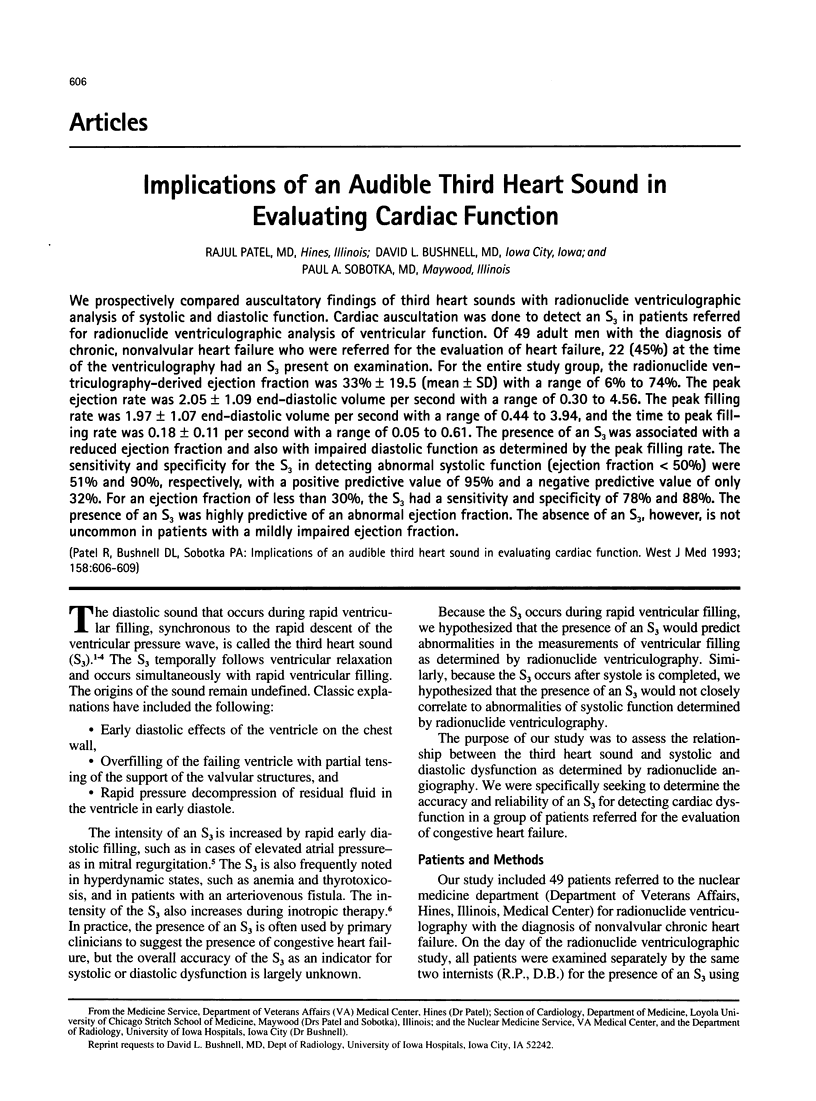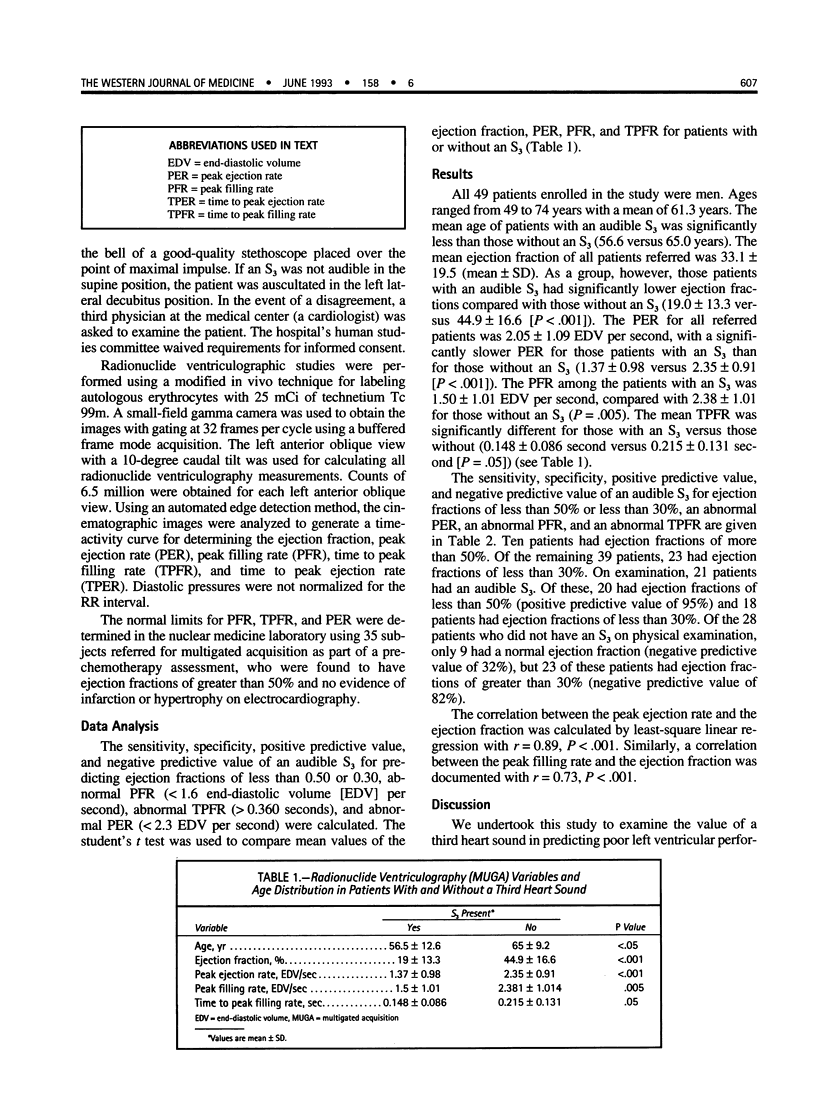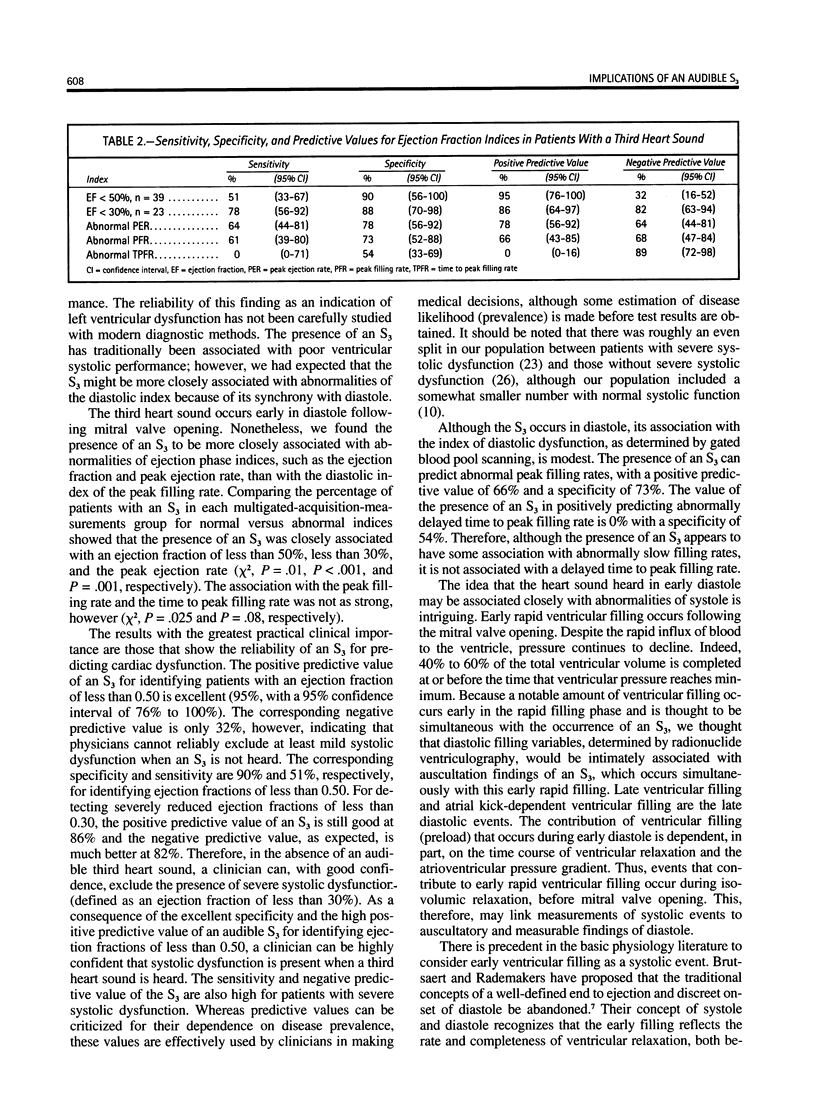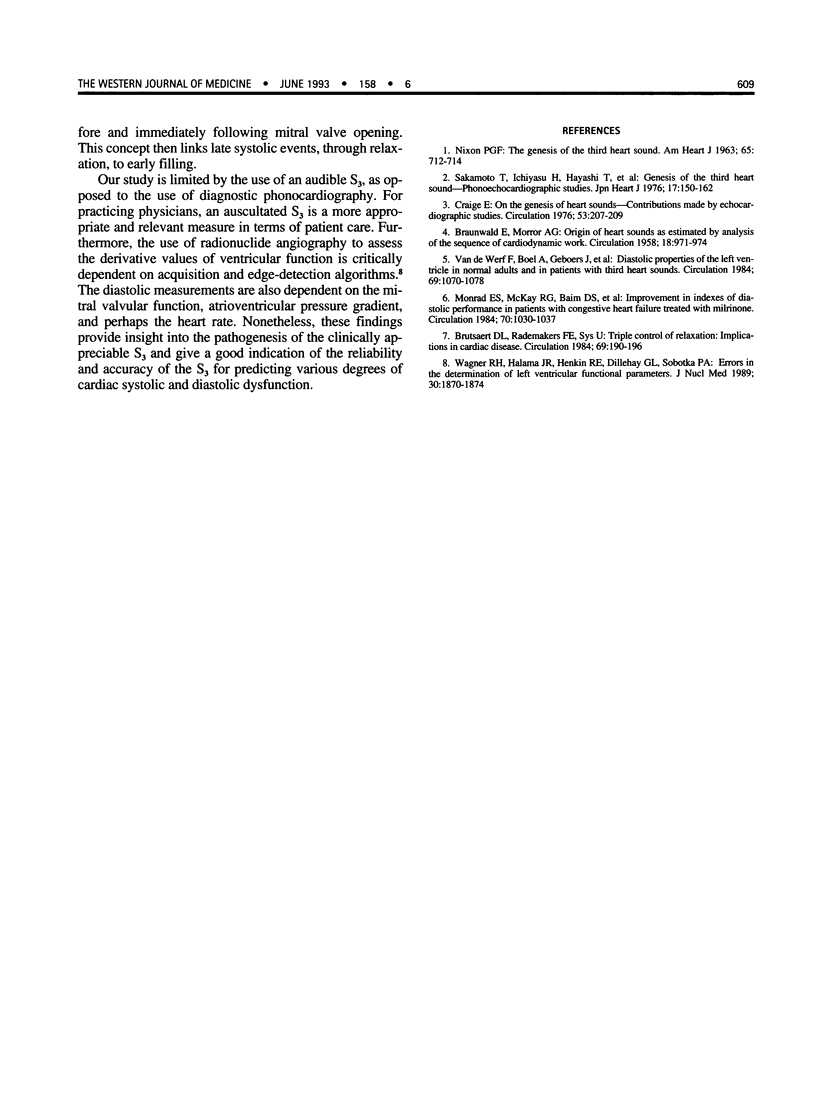Abstract
We prospectively compared auscultatory findings of third heart sounds with radionuclide ventriculographic analysis of systolic and diastolic function. Cardiac auscultation was done to detect an S3 in patients referred for radionuclide ventriculographic analysis of ventricular function. Of 49 adult men with the diagnosis of chronic, nonvalvular heart failure who were referred for the evaluation of heart failure, 22 (45%) at the time of the ventriculography had an S3 present on examination. For the entire study group, the radionuclide ventriculography-derived ejection fraction was 33% +/- 19.5 (mean +/- SD) with a range of 6% to 74%. The peak ejection rate was 2.05 +/- 1.09 end-diastolic volume per second with a range of 0.30 to 4.56. The peak filling rate was 1.97 +/- 1.07 end-diastolic volume per second with a range of 0.44 to 3.94, and the time to peak filling rate was 0.18 +/- 0.11 per second with a range of 0.05 to 0.61. The presence of an S3 was associated with a reduced ejection fraction and also with impaired diastolic function as determined by the peak filling rate. The sensitivity and specificity for the S3 in detecting abnormal systolic function (ejection fraction < 50%) were 51% and 90%, respectively, with a positive predictive value of 95% and a negative predictive value of only 32%. For an ejection fraction of less than 30%, the S3 had a sensitivity and specificity of 78% and 88%. The presence of an S3 was highly predictive of an abnormal ejection fraction. The absence of an S3, however, is not uncommon in patients with a mildly impaired ejection fraction.
Full text
PDF



Selected References
These references are in PubMed. This may not be the complete list of references from this article.
- BRAUNWALD E., MORROW A. G. Origin of heart sounds as elucidated by analysis of the sequence of cardiodynamic events. Circulation. 1958 Nov;18(5):971–974. doi: 10.1161/01.cir.18.5.971. [DOI] [PubMed] [Google Scholar]
- Brutsaert D. L., Rademakers F. E., Sys S. U. Triple control of relaxation: implications in cardiac disease. Circulation. 1984 Jan;69(1):190–196. doi: 10.1161/01.cir.69.1.190. [DOI] [PubMed] [Google Scholar]
- Craige E. On the genesis of heart sounds. Contributions made by echocardiographic studies. Circulation. 1976 Feb;53(2):207–209. doi: 10.1161/01.cir.53.2.207. [DOI] [PubMed] [Google Scholar]
- Monrad E. S., McKay R. G., Baim D. S., Colucci W. S., Fifer M. A., Heller G. V., Royal H. D., Grossman W. Improvement in indexes of diastolic performance in patients with congestive heart failure treated with milrinone. Circulation. 1984 Dec;70(6):1030–1037. doi: 10.1161/01.cir.70.6.1030. [DOI] [PubMed] [Google Scholar]
- Sakamoto T., Ichiyasu H., Hayashi T., Kawaratani H., Amano K. Genesis of the third heart sound. Phonoechocardiographic studies. Jpn Heart J. 1976 Mar;17(2):150–162. doi: 10.1536/ihj.17.150. [DOI] [PubMed] [Google Scholar]
- Van de Werf F., Boel A., Geboers J., Minten J., Willems J., De Geest H., Kesteloot H. Diastolic properties of the left ventricle in normal adults and in patients with third heart sounds. Circulation. 1984 Jun;69(6):1070–1078. doi: 10.1161/01.cir.69.6.1070. [DOI] [PubMed] [Google Scholar]
- Wagner R. H., Halama J. R., Henkin R. E., Dillehay G. L., Sobotka P. A. Errors in the determination of left ventricular functional parameters. J Nucl Med. 1989 Nov;30(11):1870–1874. [PubMed] [Google Scholar]


